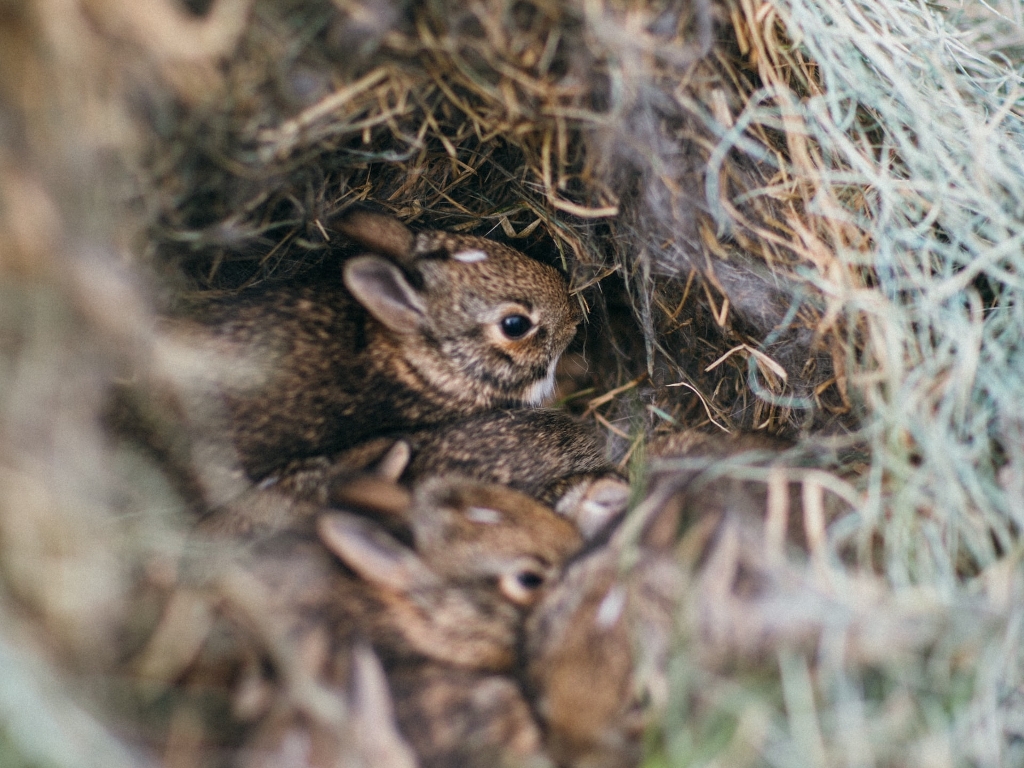
Caring for Baby Bunnies from the Wild: A Comprehensive Guide
Baby bunnies, also known as kits, are fragile and vulnerable creatures that require specialized care if they are found orphaned or injured in the wild. Attempting to care for a baby bunny without proper knowledge and resources can be detrimental to its health and well-being. This comprehensive guide will provide detailed instructions on how to care for baby bunnies from the wild, ensuring their survival and optimal development.
Assessing the Situation
Before attempting to handle a baby bunny, it is crucial to assess the situation and determine if intervention is necessary. If the bunny is uninjured and its nest is intact, it is best to leave it alone. Mother bunnies typically leave their kits unattended for extended periods while foraging for food. However, if the bunny is visibly injured, orphaned, or its nest has been destroyed, immediate intervention is required.
Capturing the Bunny
If necessary, gently capture the bunny using a soft cloth or towel. Avoid grabbing the bunny by its ears or legs, as this can cause injury. Place the bunny in a warm, secure container, such as a cardboard box lined with soft bedding.
Providing Warmth
Baby bunnies are unable to regulate their body temperature and rely on external sources for warmth. Place a heating pad or hot water bottle wrapped in a towel at one end of the container. Ensure that the heat source does not come into direct contact with the bunny and that the other end of the container remains cool to allow the bunny to move away if it becomes too warm.
Feeding the Bunny
Baby bunnies require a specialized milk formula specifically designed for rabbits. Do not use cow’s milk or other animal milks, as these can cause digestive problems. Follow the instructions on the milk formula package carefully. Feed the bunny every 2-3 hours using a syringe or bottle with a small nipple. Hold the bunny upright and gently insert the nipple into its mouth. Do not overfeed the bunny, as this can lead to bloat.
Stimulating Elimination
After feeding, gently rub the bunny’s genital area with a warm, damp cotton ball to stimulate elimination. This is necessary because baby bunnies cannot urinate or defecate on their own. Repeat this process after each feeding until the bunny eliminates.
Cleaning the Bunny
Baby bunnies do not require frequent bathing. However, if the bunny is soiled, gently wipe it down with a warm, damp cloth. Avoid using soap or detergents, as these can irritate the bunny’s skin.
Housing the Bunny
Provide the bunny with a clean and comfortable housing area. A cardboard box lined with soft bedding, such as shredded paper or towels, is suitable. Place the housing area in a quiet and draft-free location.
Veterinary Care
If possible, take the baby bunny to a veterinarian for a checkup. The veterinarian can assess the bunny’s health, provide appropriate medical care, and advise on proper feeding and care.
Releasing the Bunny
Once the baby bunny is old enough and healthy, it should be released back into the wild. The ideal age for release is around 8-10 weeks, when the bunny is fully weaned and has developed the necessary survival skills. Choose a release site that is similar to the bunny’s original habitat and provides ample food and shelter.
Important Considerations
- Do not attempt to keep a baby bunny as a pet. Wild rabbits are not domesticated and require specialized care that is difficult to provide in a home environment.
- If the bunny is injured or sick, seek veterinary attention immediately.
- Do not handle the bunny excessively. Baby bunnies are easily stressed and can become ill if handled too often.
- Provide a quiet and calm environment for the bunny.
- Be patient and gentle when caring for a baby bunny. It takes time and effort to properly care for these fragile creatures.
Conclusion
Caring for baby bunnies from the wild requires specialized knowledge, resources, and dedication. By following the instructions outlined in this guide, you can provide the necessary care to ensure the survival and well-being of these vulnerable creatures. Remember that it is crucial to seek veterinary attention if necessary and to release the bunny back into the wild when it is old enough and healthy.
